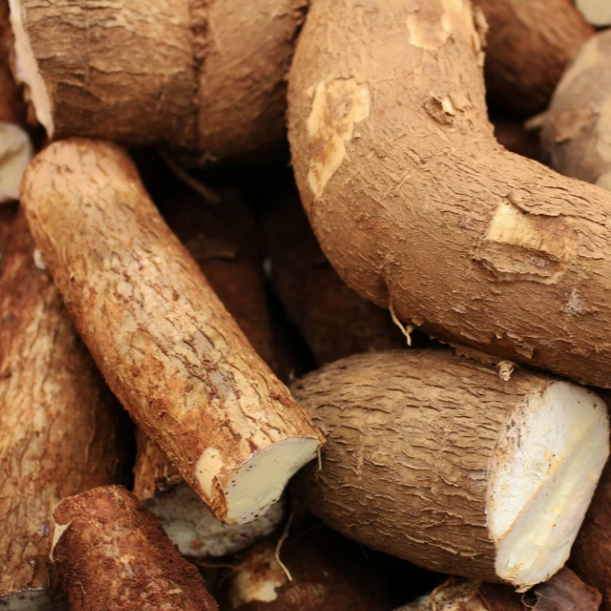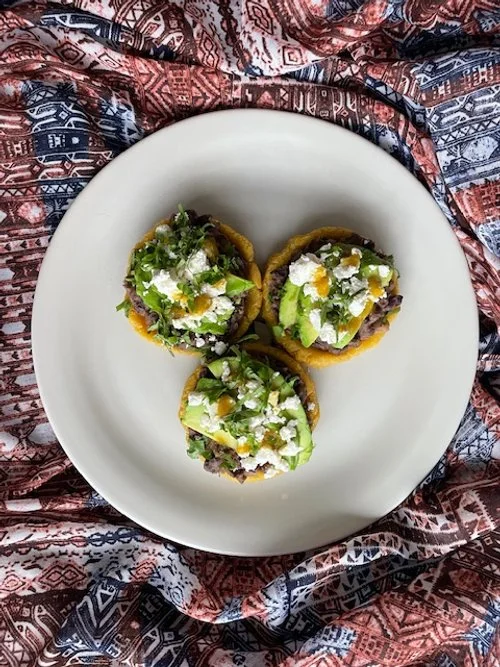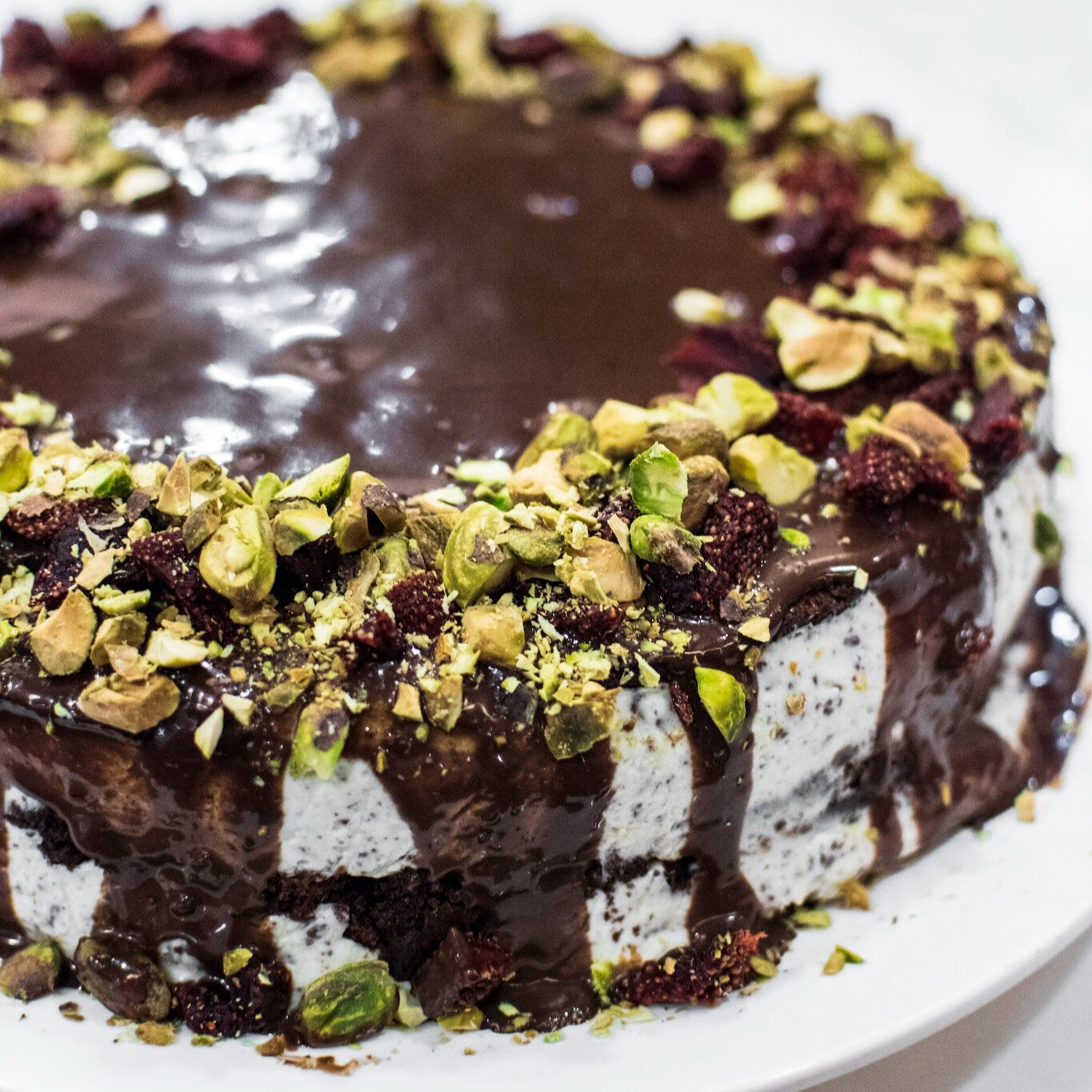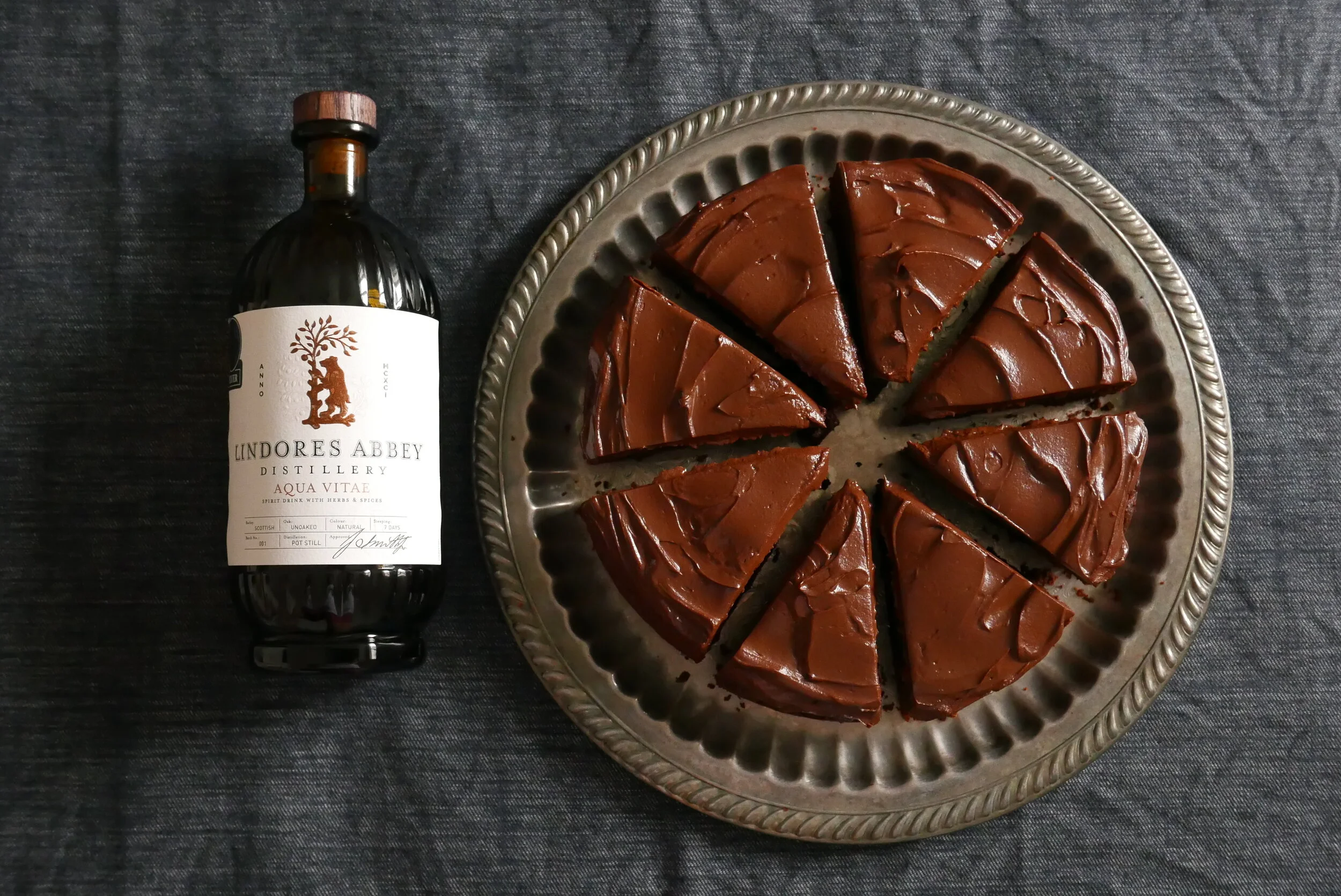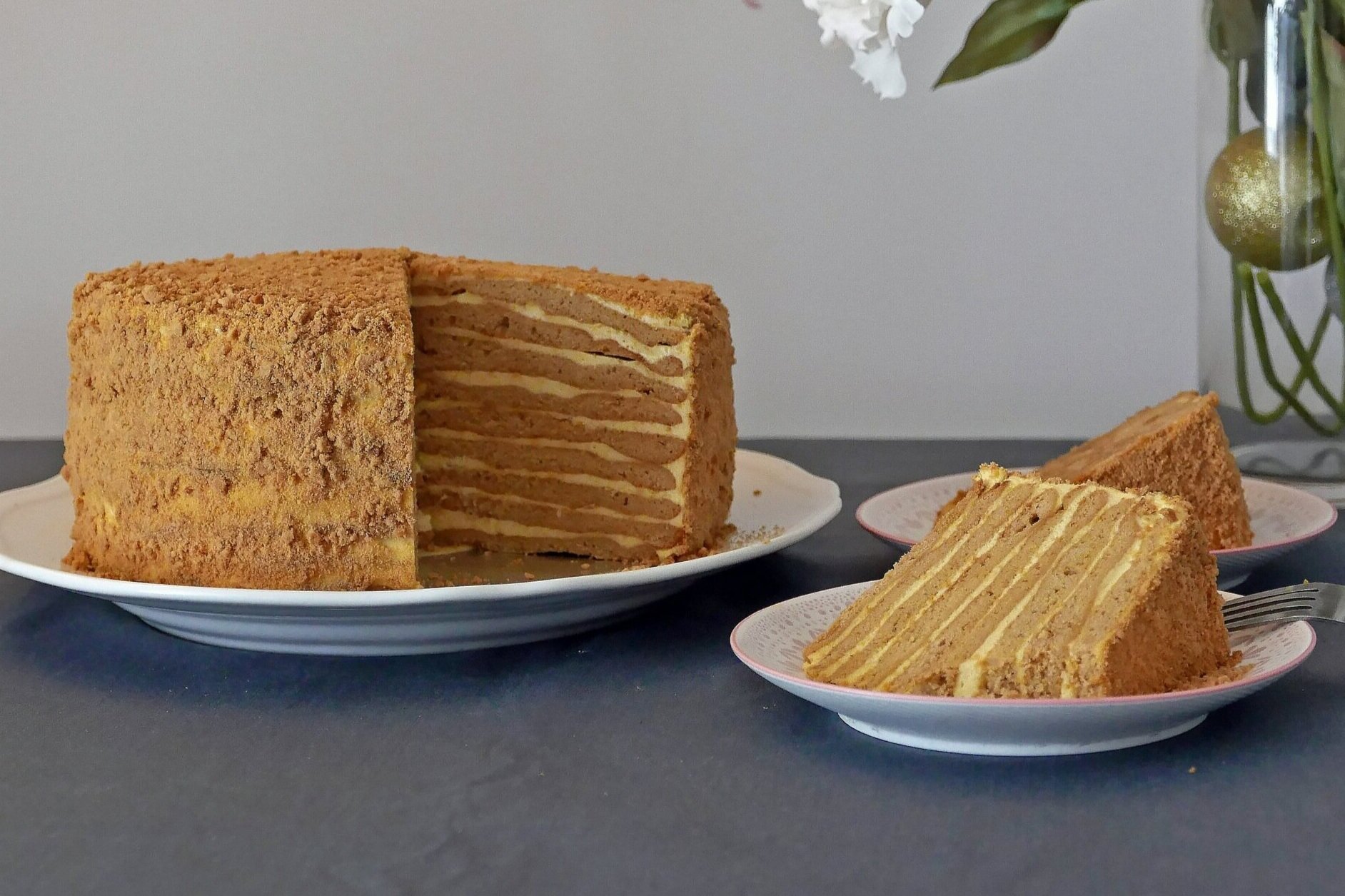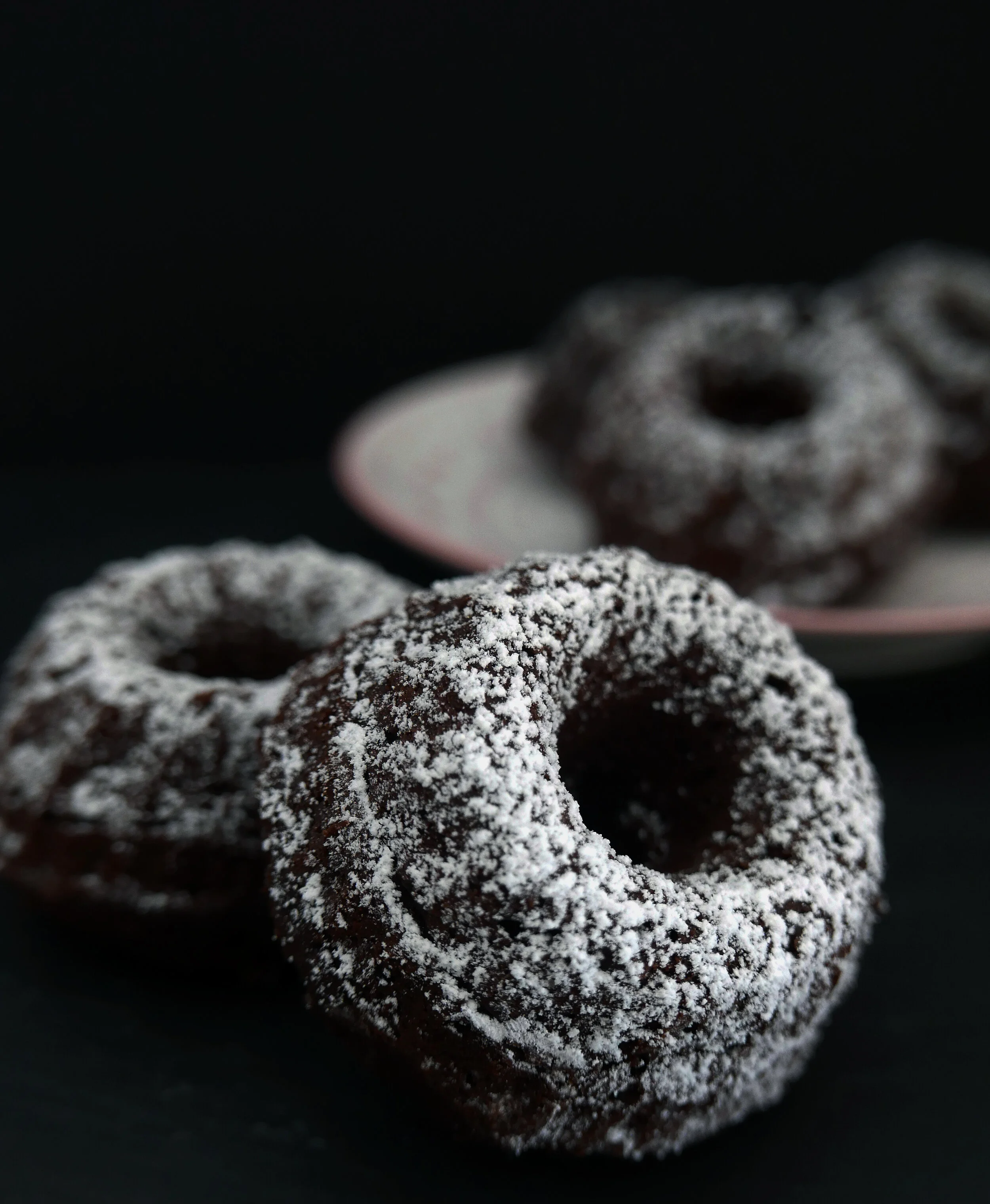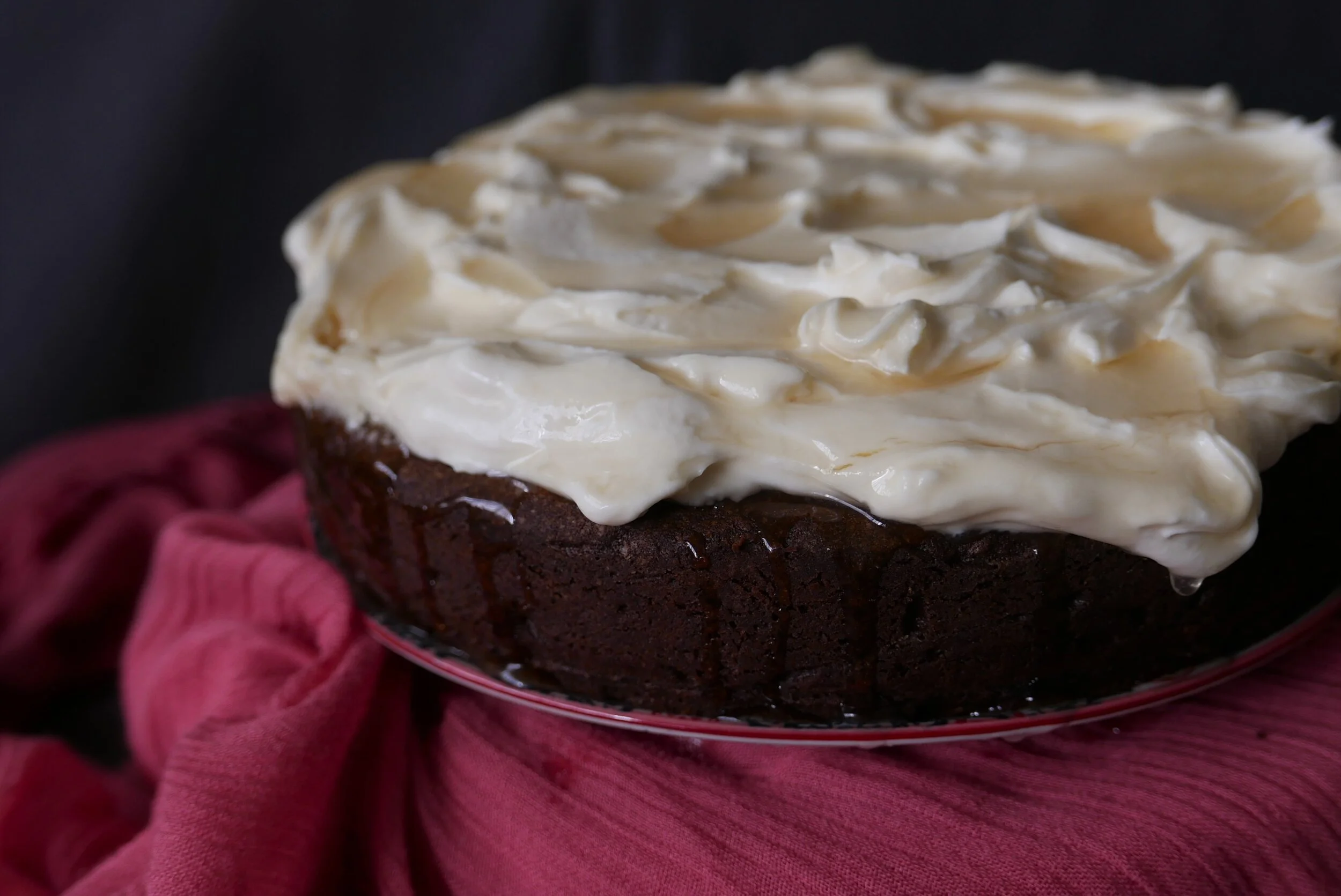explore the world through the universal language of food
Orange Marmalade Cardamom Cake
The Recipe
Makes: 1 x 20cm cake
Preparation: 15 minutes
Baking Time: 40-45 minutes
“The earliest recording of citrus can be found in Chinese literature dating around 314BC”
Oranges are an extremely vitamin-rich fruit that can be used in many cooking applications.
The earliest recording of citrus can be found in Chinese literature dating around 314BC. From Asia, the Arabs were influential in the journey of oranges through the Mediterranean in the 7th Century.
Christopher Colombus was most likely responsible for transporting one of the first orange seed trees to the United States, the second-largest producer of oranges in the world.
The sweet orange we know today is actually a hybrid of pomelo and mandarin and is the most common citrus available all around the world.
I have used some Egyptian oranges in this month’s recipe that calls for one of my favourite and unique spices – cardamom. The bottom of the cake layered with wheels of orange and buttered marmalade ends up being the decorative top of the cake.
All that is needed is a good scoop of thick double cream.
INGREDIENTS
Topping
2 oranges (cut the ends off and slice into 3mm wheels)
100g fine-cut citrus marmalade
50mls water
20g brown sugar
30g salted butter
Cake
200g unsalted butter
200g white caster sugar
4 medium eggs
1 tsp good vanilla paste
2 oranges zest and juice
80g yoghurt
2tsp baking powder
200g plain flour
100g nut flour (almond or hazelnut works)
½ tsp fine sea salt
2tsp cardamom powder
METHOD
1) Heat the marmalade, water and sugar over medium heat, stirring occasionally
2) When it reduces slightly, add the butter and stir in until melted and combined.
3) Turn off the heat and set aside
1) Preheat the oven to 170°C
2) Grease and line a 20cm springform cake pan
3) Beat the sugar and butter together until light and fluffy
4) Add in the eggs one at a time and then the vanilla paste
5) Mix the juice and zest of oranges with the yoghurt
6) Sift the flour, baking powder and salt in a medium bowl, add the nut flour
7) Add ½ of the dry mixture to the sugar and egg mixture, and mix until just
combined.
8) Then add the yoghurt, juice, and zest mix.
9) Finally finish up with the dry mixture, stirring until all ingredients are incorporated
10) Pour the topping mixture into the lined cake tin and layer the slices of oranges to cover the entire base.
11) Lastly, add the cake batter and tap lightly to even it out.
12) Place in the oven and bake for 40-45 minutes.
Allow to cool slightly before turning out the cake onto a plate.
Admire the bottom of the cake which is now the decorative top! Cut a generous slice and enjoy.
Chocolate and Pistachio Cassata Cake
The Recipe
Makes: 1 x 20cm cake
Preparation: 40 minutes
Baking Time: 40 minutes
Cassata is a traditional sponge layer cake from Sicily. It consists of ricotta, dried fruits, nuts, marzipan, and chocolate.
Credit: @etstudiosg
Although still a region of Italy, Sicily seems like another country with locals referring to themselves as ‘Sicilians’ and not Italians. In Sicily, they speak ‘Sicilian’ and little English in the smaller towns which makes travelling through this part of Italy all the more exciting.
Sicily is the largest island in the Mediterranean Sea and has a rich history and culture, which to my delight, is prevalent through a lot of its architecture and food from region to region. A couscous in Trapani will be the influence of North Africa, Pomodoro (the most amazing in the world), region-wide, is an influence of Spain, spices, citrus, and dried fruits came about from Arab occupation, and ingredients such as melanzane, olives, and seafood have come from my other food country love, Greece.
It was not only the people of Sicily that inspired me and warmed my heart with their open arms, beautiful hospitality, breathtaking beaches, and amazing food, but the travelers I encountered on my journey – free spirits from around the globe that made their way to this beautiful island and took away so much more than we had all expected.
While in Marsala, a beautiful town known famously for the landing of Garibaldi in the 1860s and also for Marsala wine, I learned how to make pasta al forno, arancino, cornetto, pane, and cassata in a traditional bakery/café called Bar Lo Stagnone.
When I travel I always make sure I visit as many local bakeries as possible to learn how they make traditional desserts. I love that traditional recipes always have a twist from region to region and person to person.
My favourite Sicilian desserts, hands down are cannoli and cassata, so I made a cake that was inspired by the two!
Cassata is a traditional sponge layer cake from Sicily. It consists of ricotta, dried fruits, nuts, marzipan, and chocolate. This recipe is inspired by many a cassata I tried while on my travels through Sicily. I remember the tiny wild strawberries and the amazing pistachios found in this region of the world, so I included some dried wild strawberries in the garnish.
The cake is fairly easy to make but will take some time – it is best made the day before so it has time to set and is, therefore, easier to ice.
INGREDIENTS
Chocolate Cake
130g unsalted butter
150g brown sugar
100g white caster sugar
180g plain flour
180mls whole milk
2tsp/8g baking powder
60g cocoa
3 medium eggs
Pinch of fine sea salt
Ricotta Filling
640g ricotta cheese
300g thickened cream
60g sifted icing sugar
4tsp vanilla bean paste
200g semi-sweet chocolate, chopped.
Cake liquor
50mls sweet vermouth
20g water
10g white sugar
Ganache Topping
150g cooking cream
120g semi sweet chocolate
Pinch of sea salt
METHOD
Preheat oven to 160’C. Line a 20cm circular spring-form cake pan.
Beat butter and sugars in an electric mixer until creamy and combined
Sift flour, baking powder, salt and cocoa in a separate bowl
Add eggs one at a time to the butter mixture until the eggs are folded in
Mix in 1/3 flour to the mixture then 1/3 milk. Continue this finishing with the flour.
Allow mixture to combine and then pour into the cake tin.
Bake for 40 minutes. Allow the cake to cool slightly before turning it out on a cake rack so it cools completely
Whip ricotta, cream and icing sugar and vanilla until completely smooth
Add in chocolate pieces and refrigerate.
Heat in a pan over low heat until the sugar is dissolved
Set aside
Heat cream on a low heat
Add a pinch of salt
Add in chocolate until it is melted and the ganache mixture is shiny and smooth. Refrigerate until cool
Assembly
With a serrated knife, slice the top of the cake to make it flat
Slice the cake across into 3 even pieces
Line the cake tin with cling film with extra hanging over the edges
Place one piece of the cake in the tin, brush liberally with cake liquor and then smooth over a layer of ricotta
Continue with the next two layers, finishing with the cake on top
Fold over cling film and set the cake in the fridge ideally overnight or for 2-3 hours until firm and set.
When the cake is set, turn out upside down and remove the cling film
Place ganache on the top of the cake allowing it to spill over the sides
Sprinkle the chopped pistachios and strawberries on top
Decoration/Garnish
80g dried or fresh strawberries
80g roasted pistachios
Dark Chocolate & Aqua Vitae Prune Cake
The Recipe
Serves: 6-8 people
Preparation: overnight
Baking Time: 45 minutes
This lusciously indulgent cake is made with some absolutely delicious Aqua Vitae from Lindores Abbey Distillery in Fife, Scotland. If you can, get your hands on this balanced malt spirit with a myriad of balanced fruit, spices and locally grown herbs.
If you can’t do so, this recipe can be substituted with rum or even a whisky.
INGREDIENTS
Aqua Vitae Prunes
200g pitted prunes
100mls Lindores Abbey aqua vitae (if not, a dark rum, whiskey)
1 tblsp sugar
Combine all ingredients and soak for a minimum of two days until the prunes are deliciously plump and juicy.
Ingredients - Cake
200g unsalted butter
100g caster sugar
100g brown sugar
3 eggs
60g cocoa
¼ tsp sea salt
250g plain flour
1.5tsp baking powder
100g dark melted chocolate (65% or more)
Dark Chocolate Ganache
300g dark chocolate (70%), chopped into bits
300g cream
1 tbsp honey
METHOD
Heat the cream on a medium setting and melt in the chocolate and honey until combined Take off the heat and allow to cool completely.
Preheat the oven to 180 °Celsius and grease and line a round 20cm (ish) cake tin.
Strain the prunes, reserving the liquid, and roughly chop the prunes.
In an electric mixer, cream the butter and sugars until light and fluffy.
Crack the eggs in a separate bowl individually before mixing them into the creamed butter mixture until combined. At this stage, you can add the reserved liquid from the soaked prunes.
Sift the cocoa, baking powder, salt, and cocoa in a separate bowl.
Mix the melted chocolate into the wet mixture and then fold in the dry ingredients
Place the batter in the lined cake tin and bake for 35-40 minutes
When the cake is done, allow to cool slightly before turning it out onto a cooling rack to cool completely.
Dress the cooled cake with the ganache on top or just the sides, whatever you fancy
Cut into not-so-generous slices as this cake is sumptuously rich, you can always go back for a second – don’t worry, I won’t judge.
Russian Honey Cake (Medovik Torte)
The Recipe
Makes: 1 x 20cm cake
Preparation: 20 minutes
Baking Time: 1 hour
The Medovik Torte or Russian Honey cake was an invention of a young chef in the Imperial Palace of the Russian Empire in the 19th Century.
The Story of the Medovik Torte
The Medovik Torte or Russian Honey cake was an invention of a young chef in the Imperial Palace of the Russian Empire in the 19th Century. It was developed to incorporate honey into a dessert for Empress Elizabeth Alexeyevna, the wife of Alexander I who was not the biggest fan of honey.
The method of heating the honey to a caramel colour allows it to take on a sweet caramel flavor and the inclusion of a sour cream frosting allows it to balance out quite beautifully.
A word or two about honey
Honey, a wonderful golden liquid that has a composition of a complex mixture of sugars, water, vitamins, minerals, pollen, and protein. It is made by these wonderful little black and yellow foragers known as bees, who collect nectar from flowers (or honeydew) near and far, store it in their honey stomachs (crops) and regurgitate it into the little vessels of the hive. The vessel is then fanned with its wings which leads to water being evaporated and the pure honey remaining.
Bees have been going about their business for more than 100 million years according to fossil evidence of these little creatures that have been preserved in resin. Cave paintings in Spain dating back 8,000 years ago show that humans have relied on bees by raiding their nests and collecting the sweet liquid they produce. The earliest evidence of beekeeping was in Ancient Egypt where hives made of clay from the Nile were placed on rafts that travelled up and down the river depending on the season.
Honey bees, honey, and wax were a part of everyday life in the ancient world. The application of honeybees’ by-products was used for culinary purposes, spiritual and religious rituals, embalming, medicinal treatments, and even as a currency.
Honey is classified according to the floral source (monofloral, poly floral, blend) and by region or country. It can be bought in both its raw form and pasteurized form. Raw honey comes straight from the honeycomb and is mashed and filtered to remove the honeycomb and other debris. Honey in its raw state is unadulterated, containing beneficial health and medicinal properties due to the pollen, propolis, antioxidants, natural vitamins, and minerals present. When honey is pasteurized, it results in a smooth clearer liquid and while it is aesthetically pleasing, will contain a loss of vitamins, essential nutrients, and minerals.
INGREDIENTS
CAKE
120g unsalted butter
300g browned honey
150g brown sugar
½ tsp salt
1 tsp cinnamon
500g plain unbleached flour
1.5tsp bicarbonate soda
4 medium eggs
1 tsp vanilla extract
FROSTING
200g browned honey
½ tsp salt
Zest of 1 orange
600g whipping cream.
400g sour cream
METHOD
Preheat the oven to 180’C. Line as many trays as you have with baking paper and draw a 20cm circle on each bit of paper.
To brown the honey, place 500g In a large saucepan on medium heat and allow it to cook for 10 -15 minutes until it becomes a dark caramel colour. Keep a close eye on it as it may boil over. Turn off the heat and pour 300g into a heat-proof bowl and 200g into a separate bowl for the frosting.
The frosting is best made ahead and allowed to set further in the refrigerator so add sour cream to the cooled browned honey, orange zest, and salt. Mix well. Whip the cream in a separate bowl until firm, then fold it into the sour cream mixture until combined. Cover and store in the refrigerator while you make the cake
In the heat-proof bowl containing the browned honey, add sugar, salt, and butter. Heat slowly over a pot of boiling water until the butter has melted and the sugar has dissolved. Take off the heat and whisk in the bicarbonate soda.
Whisk eggs with vanilla in a separate bowl and then slowly whisk this into the honey-sugar mixture.
Finally sift flour and cinnamon and fold into the liquid mixture until combined
Measure 100 g of the cake batter and spread it evenly inside the drawn circle with a spatula. Repeat this on all the baking paper circles. Place in the oven and cook for 5-7 minutes until the batter is cooked. Allow the cake to cool slightly before transferring it to a cooling rack. Repeat this until you have about 10-12 cookie cake rounds. For the last 1-2 cakes you can cook at 130’C for about 8-10 minutes until the cake is nicely browned – this will be used for decorating later. Allow all the layers to cool completely before icing.
Start with the first layer by spreading a small amount of frosting on a 20cm circular cake board. Place the cake layer on top and then add, smoothing out evenly as you go. Keep layering until all the cake has been used up. Finally, ice the top and the sides of the cake. Return to the refrigerator and allow to set.
Blitz up the cooled cake layer that was baked in the oven slightly longer until you have a coarse breadcrumb consistency. When the cake is set, gently but firmly pat the crumbs to the top and the side of the cake.
Cut into generous slices, drizzle with extra honey, and indulge in this gorgeous cake!
Chocolate & Yoghurt Mini Bundt Cakes
The Recipe
Makes: 12 small Bundt cakes
Preparation: 20 minutes
Baking Time: 10-12 minutes
Bundt tins were inspired by the shape of a raisin and almond-yeasted bread known as ‘Kugekhopf’ that is found in Germany, Austria, Alsace & Switzerland. They are a recent invention around the 1950s by David Dalquist, a metallurgist based in Minnesota.
So I dropped into a bargain discount store, as I do, to see if anything for the kitchen would catch my eye, and stumbled upon a mini Bundt baking tin. As soon as I see bundt cakes I think of the most delicious bundt/tea cakes at Ottolenghi when I lived in London (I absolutely love all their bakery treats). Unfortunately, they are a rare sight in Singapore and bakeries usually have mini cakes in the form of muffins or mini loaves.
Bundt tins were inspired by the shape of a raisin and almond yeasted bread known as ‘Kugekhopf’ that is found in Germany, Austria, Alsace & Switzerland. They are a recent invention around the 1950s by David Dalquist, a metallurgist based in Minnesota.
A Bundt cake today doesn’t really follow a specific recipe. It is simply baked in a bundt tin and because of the hole in the middle, cooks faster than regular cakes and results in a more dense texture.
As with all baking recipes, the timing and texture of the cake will depend on the oven and how much moisture the flour and cocoa will absorb. I recommend using your gut instinct and add a little more liquid if the cake batter is a little too thick.
INGREDIENTS
80g unsalted butter
150g brown sugar
1 medium egg
100g melted dark chocolate.
1/2 tsp baking powder
1/2 tsp cinnamon powder
1/4 tsp bicarbonate soda
1/4 tsp fine sea salt
40g cocoa
170g plain flour
150g Greek yoghurt
METHOD
Preheat the oven to 170’C
In an electric mixer, beat butter and sugar together until nice and fluffy
Sieve the flour, cocoa, cinnamon, salt, baking powder and baking soda into a bowl
Add in the egg and a little bit of flour to bind the eggs and sugar
Incorporate the melted chocolate
Turn the electric mixer to low and add a half the flour/cocoa mixture and half the yoghurt. Allow the batter to be combined then add the rest of the yoghurt and finish up with the flour/cocoa mixture.
The mixture will be slightly firmer than a regular cake batter, if needed you can add a little more yoghurt.
Place into a plastic bag and cut off the tip. Pipe into a well-greased bundt tin or muffin tin about 3/4 full.
Bake for 10-12 minutes and allow to cool slightly before turning out onto a cake rack
Allow the cakes to cool completely sifting over some snowy white icing sugar.
Dark Chocolate Cake with Honey Mascarpone
The Recipe
Yields: 20cm cake
Preparation Time: 25 minutes
Baking Time: 35-40 minutes
With a whipped mascarpone and a drizzle of good honey, there is nothing more comforting than this rich chocolate cake.
After writing my article on chocolate, I had a craving for cake - that would be of the chocolate kind. Cake, for me, is as indulgent as it gets and I like to go the whole hog with either a decadent frosting or a drizzle of some kind of delicious sauce with a good scoop of ice cream on the side.
Gluten free, sugar free and less fat - please don't do that to yourselves if you are eating cake. Just don't eat so much of it and it will all balance out. Promise.
Hope you enjoy making and eating this cake as much as my flat mates and I did!
INGREDIENTS
Cake
200g unsalted butter
200g caster sugar
180g dark chocolate (60% or above), melted in the microwave or bain marie
3 medium eggs
½ tsp good vanilla extract
3g/ 1½ tsp baking powder
20g/2tblsp cream
50g cocoa powder
¼ tsp fine sea salt
250g plain flour
Honey Mascarpone Frosting
250g mascarpone
½ tsp good vanilla extract
20g good strong flavoured honey
50g whipping cream
METHOD
Have all ingredients at room temperature
Grease, line and flour a 20cm spring form cake tin
Preheat the oven to 180’C
Cream butter and sugar in an electric mixer until it is pale and light in colour
Mix in slightly whisked eggs and vanilla extract until combined
In a separate bowl, sift cocoa powder, flour, salt and baking powder
Slowly add half the dry mixture and the cream
Finally add the last half of dry mixture, making sure the batter thoroughly mixed, that means not forgetting to scrape the bits of butter and other good stuff that may have stuck to the bottom of the mixing bowl
Pour into the prepared baking tin (the mixture will be thick), level out and place in the oven for 35-45 minutes
The cake is done when inserting a knife it comes out pretty clean. With cooling, the cake will become nice and fudgy so it is important to not over bake!
Let the cake rest for 5 minutes before removing from the cake tin and allowing it to cool completely on a cake rack
Whisk all ingredients until combined and fluffy
Top the completely cooled cake with the mascarpone frosting (as rustic or as neatly as you like) and drizzle with a little more honey
Cut a big slab, curl up on the sofa and indulge in the simple pleasure of this glorious cake!
Classic Carrot Cake with Cream Cheese Frosting
The Recipe
Makes: 1 x 20cm cake
Preparation: 20 minutes
Baking Time: 45 minutes
A classic carrot cake with a sprinkling of candied orange peel to decorate the rich cream cheese frosting
Brownies last week and today, pastel de zanahoria or carrot cake. It appears to be birthday month in Mexico and I love having the excuse to bake like nobody’s business.
It’s an oldie, a goody and a classic. If you consume a dry carrot cake – there is something very wrong.. it has either been in the oven for a good few hours, the recipe has too much flour or not enough carrot. I’ve tried thousands of carrot cake recipes and eventually came up with this one. In all of my cakes I use butter but traditionally the carrot cake was supposedly born in the United States, hence the use of oil, however Britain claims some of the fame during rationing of food in the second world war. Whoever invented it and for whatever reason, this cake is always a crowd-pleaser.
You can use olive oil if you like but the flavour will be super strong. Use a neutral-tasting oil such as sunflower if you want to taste the carrots and spices rather than the oil.
INGREDIENTS
CAKE
4 medium eggs
150g muscovado sugar
150g sunflower oil
350g peeled and grated carrots
300g unbleached wheat flour
1.5 tsp baking powder
1tsp ground cinnamon
1/2 tsp ground ginger
1/2 tsp ground cardamom
80g toasted pecans roughly chopped
80g dark raisins (the juicer the better)
fine zest of 1 orange
dash of vanilla
FROSTING
125g unsalted butter, softened
200g icing sugar, sifted
250g of softened cream cheese
juice of half an orange
CANDIED ORANG PEEL
1 large orange, nice and bright and preferably wax free
100g unrefined sugar
100g water
METHOD
Grease your pan!! If it is a fairly good pan, you can do without lining the sides but always line the base of your pan to prevent it from sticking. You want to use a round 23cm springform pan. It is best. If you use a smaller-sized pan – the cooking time MAY increase, depending on how good your oven is.
Preheat oven to 180’C.
Crack the eggs in a bowl and add the sugar. Whisk and whisk and whisk if you don’t have the privilege of owning a kitchen aid (or if you are me, longing to pick up my kitchen aid from a friend babysitting it in Singapore). So you want to whisk it until it changes colour and thickens slightly.
Toast the pecans in a pan or in the oven. Allow to cool slightly and roughly chop.
Grate the carrots and put aside with the nuts and raisins. We will add all of these together soon!
Add the oil and whisk more, throw in the vanilla while you are at it at this stage.
Sift in the flour, spices, salt and baking powder. Mix until all combined.
Now add the chunky ingredients (raisins, carrots and nuts) and fold in nicely.
Pour the batter into the pre-greased tin and bake for a good 40-60 minutes (mine is a gas oven so it takes a little longer. You should know the temperament of your own oven so gauge it within this time frame)
Remove and allow to cool in the tin for about 5 minutes. Unmould and turn out onto a cooling rack. Allow the cake to cool completely before icing.
Make sure both butter and cream cheese are at room temperature and are quite soft. If one is colder than the other, the fat in the product will seize and you will get a lumpy texture.
Mix both butter and cream cheese really well until nice and smooth. Incorporate the juice and finally, bit by bit, sift in the icing sugar. The texture should be smooth and the consistency should not be too runny. If so, feel free to sift in more icing sugar to thicken it up. You will get a good workout if you do this by hand but I advise you to use an electric mixer if you have one to achieve a fluffier frosting.
You can choose to ice just the top of the cake or if you want a little bit more work to do, you can slice the cake in half, slap on some frosting midway, sandwich it and pop the rest on top.
It’s your cake, do whatever you want!
Pop the water and sugar in a saucepan and stir a little. Zest the peel of the orange and then add it to the sugar mixture. Boil until the liquid has become a toffee consistency and the liquid has pretty much evaporated. Allow to cool at room temperature or to speed up the process – throw it in the fridge.
The strands should be nice and crunchy. Place on top of the frosting however your heart desires.
I hope you enjoy baking, assembling, decorating, and eating this cake as much as I did.
Tarta De Santiago
The Recipe
Makes: 1 x 22cm cake
Preparation: 15 minutes
Baking Time: 40-45 minutes
“The Tarta de Santiago is an almond cake that is found on the menu of many local restaurants and is seen in the windows of many Galician bakeries.”
There was a time, in 2011 when I started a blog on WordPress.
It was for me to document my baking journey and experiments. Over time it became a mix of food and a travel blog with a lot of unedited photographs.
It is now twelve years later, and I have built this platform that I am really proud of.
So here is the very first post I put out into the world, on this day in 2011.
“I have been thinking about my first post for weeks. What should I start with and how should I word it….. Hmmm. I have a few entries saved on my laptop and then I thought shoot! Stop procrastinating and post!”
So here it is – My boss’s husband needed me to make a cake for a party and it had to be Spanish themed. Other than creme Catalan which was the first dessert that came to mind I decided on the Tarta de Santiago or St James Cake.
On my travels through Northern Spain, I stayed in the Galician capital, Santiago de Compostela, in the province of A Coruna. The cathedral of Santiago del Compostela is a destination for many tourists each year that take on the catholic pilgrimage route that is about 780km from start to finish.
The Tarta de Santiago is an almond cake that is found on the menu of many local restaurants and is seen in the windows of many Galician bakeries. It is appealing and patriotic as it is decorated with a dusting of icing sugar over a stencil of the Cross of Saint James. It’s a fairly easy cake to make and super delicious and moist to eat…
INGREDIENTS
250g crushed almonds (almond meal is fine as is hazelnut meal for a richer flavour)
250g un refined caster sugar (if unavailable, regular caster is fine)
5 medium free range eggs
zest of 1 unwaxed lemon
2 tablespoons of icing sugar
1/2 teaspoon cinnamon powder
1/4 teaspoon of natural almond essence (optional)
butter for greasing the cake tin
METHOD
Pour the sugar, almonds (or hazelnuts if using), cinnamon, almond essence (if using), and zest into a bowl. Mix well until combined
2. Crack the eggs in a separate bowl one at a time ( I do this just in case I accidentally drop in shell or if the egg is bad. This prevents you from throwing out the whole mixture and reduces the frustration of foraging into the mixture to find that rogue shell!!)
3. Add the eggs one at a time and mix well until incorporated.
4. Pour the batter into the lined cake tin and bake in a moderate oven (180 degrees celsius) for about 40-50 minutes. The time this cake will take to bake will depend on your oven. When a skewer is inserted into the centre of the cake, it should come out clean. If it still has gooey batter on it, give it another 5 minutes in the oven.
6. Whle the cake is baking away nicely in the oven, use this time to draw and cut out your stencil.
7. When the cake is taken out of the oven cool for about 5 minutes in the pan and then unmould it and put it on a cooling rack
8. When the cake has completely cooled ( I had to speed up this process by propping a fan next to the cake..), pop on the paper stencil and sprinkle icing sugar all over the top of the cake.



